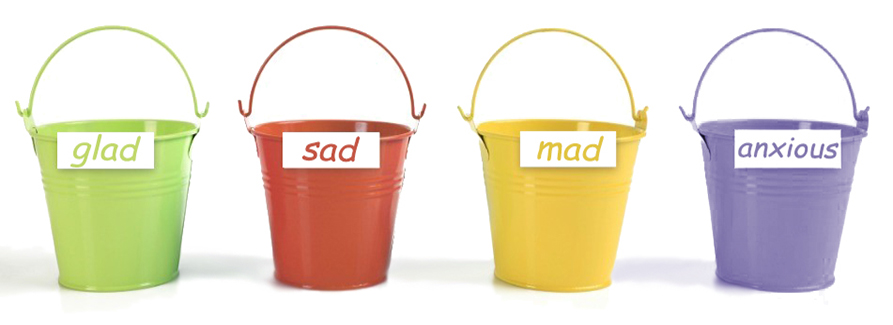Often, people in my office get confused about what they are feeling. When asked to name the feeling they are experiencing, they often name one of four buckets of feelings: Glad, Sad, Mad, and Anxious. Every feeling we have gets thrown into one of those four generalized buckets. Then, the same people start to get frustrated when their partners don’t understand the feeling or why they are experiencing it.
Each bucket is made up of several smaller buckets. There are lots of things that look like mad: frustration, loneliness, sadness, confusion, fear, desperation and other feelings can all look like mad. Let’s be sure that we are naming the right emotion.
Once I am able to slow them down, I ask them to examine the emotion. What are they actually feeling? If they tell me they are mad, I want to know more. Where in your body do you experience mad? How do you experience mad in your body? Once the person can start to connect the feeling with the physical self, the experience becomes more than a hot anger.
As we get deeper into the story, the facts begin to shape the narrative. We begin to learn about right and wrong, good and bad, should and shouldn’t. Using curiosity to understand the thought process behind the emotion gives us valuable information that we can use to build stronger connections.
What does it mean to you to be mad? Finding a context or a bigger picture, often broadens the story for the listener. Then the emotion is not just a blast of affect but a message that is trying to communicate a more important message.
Learning to experience feelings and communicate them to our loved ones is a skill that can be nurtured and grown through introspection and self-awareness. If you are looking to understand and manage your feelings in a more productive way, contact Elliott at elliott@drelliottk.com.




